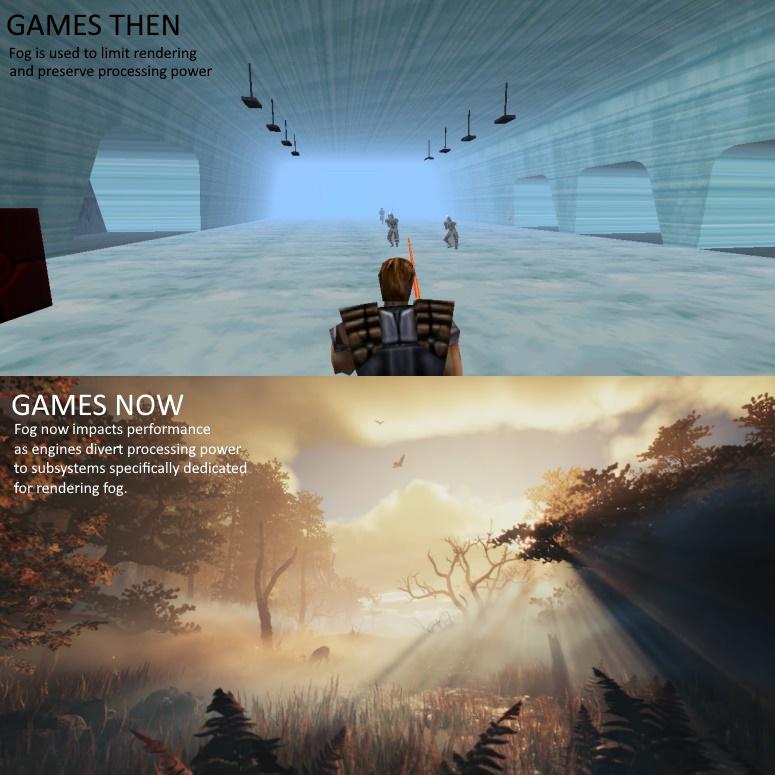I’m thrilled to have lived in the time period that I grew up in. When I was born in 1976, there was essentially no such thing as a “home computer”, much less amazing devices like cell phones, and I’ve been able to watch as technology has grown up with me.
When I was young, our family got a Commodore 64, and it was great! Things change quickly, though — as a point of comparison, your cell phone today has more than 1,000,000 times the memory that the Commodore had. It’s crazy.
While I’m sad I won’t be around to see where technology goes in the coming hundreds and thousands of years, seeing the vast change over my lifetime (hopefully with much more to come) has been amazingly fun.
Fog
This all came to mind after I saw the post below on Reddit recently. Years ago, games used fog to help hide distant objects and make easier for the computer to keep up with the necessary processing to run the game. While some games made creative use of the fog, the primary purpose was to hide distant objects to help the relatively slow machines handle the game.
These days, fog is used purely to make things look good — it comes at the cost of incredible amounts of computing power, but most systems these days have plenty of power to spare.

Even if I’m only around another 30-40 years, the leaps that we’ll see in future games and applications will be amazing. It’s getting harder to predict, though. Years ago, it was easy to say that games would simply get increasingly detailed and vivid, which we’ve seen, but there’s a point of diminishing returns on that. Heck, we’re even seeing the reverse happen in some cases — instead of Madden Football trying to look more like real life, the NFL is pushing real life to try to match the quality of the game!
I suspect the future will see a lot more in the way of VR and AR, but who knows? All I can tell you is that next time you see a beautiful fog effect in a game, know that the developer put it there for your benefit and not to hide the shortcomings of today’s technology.




